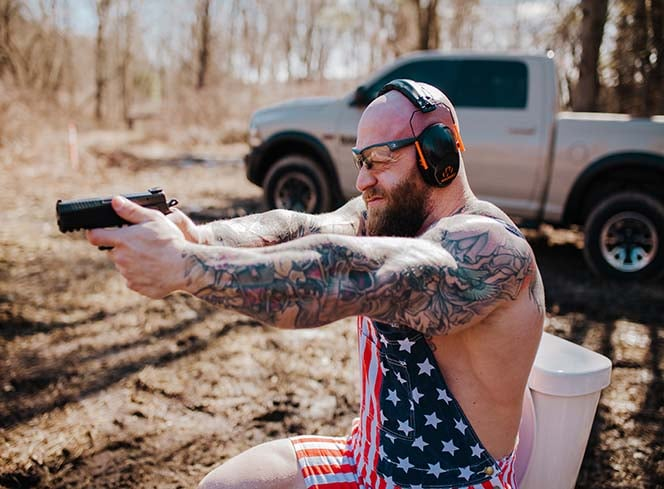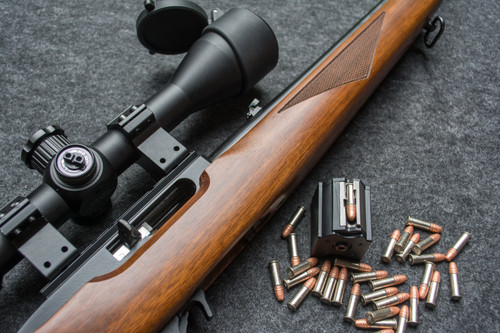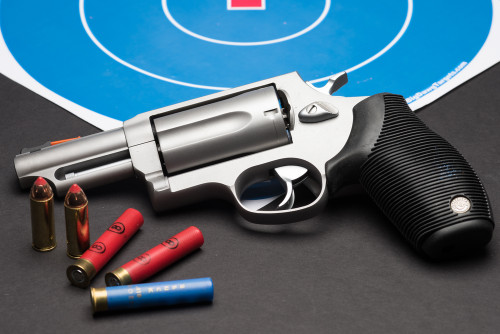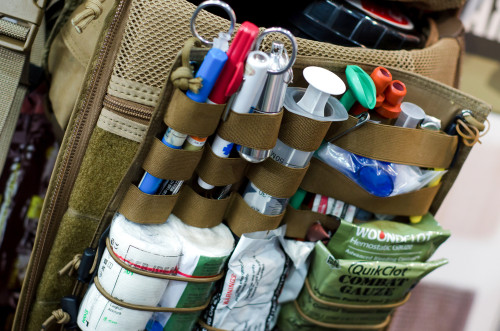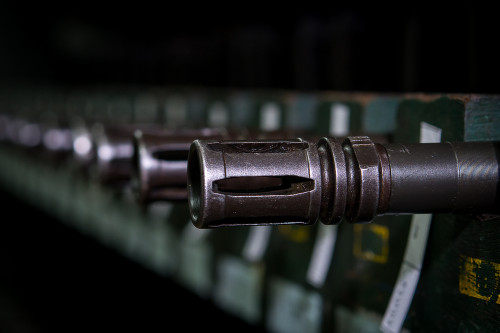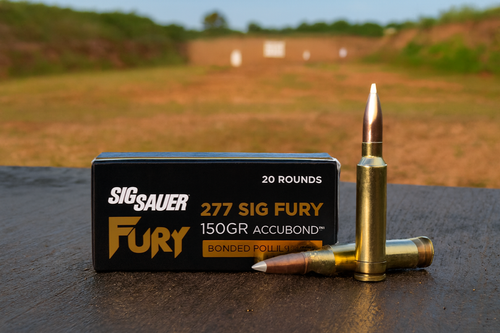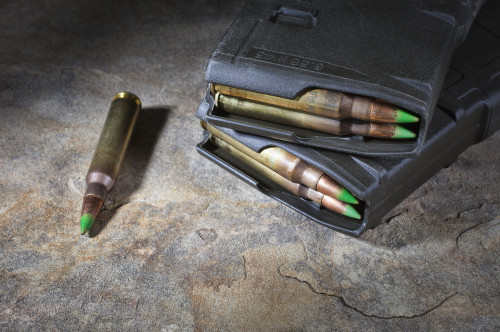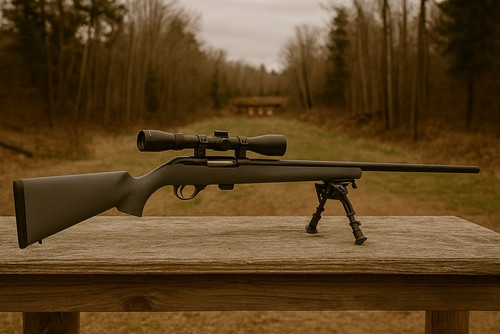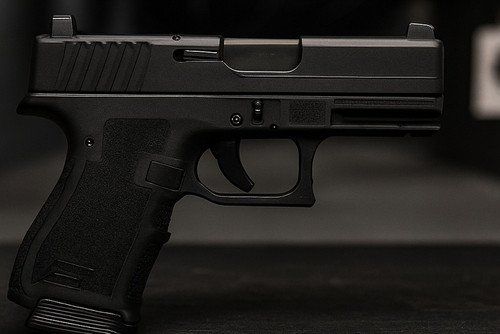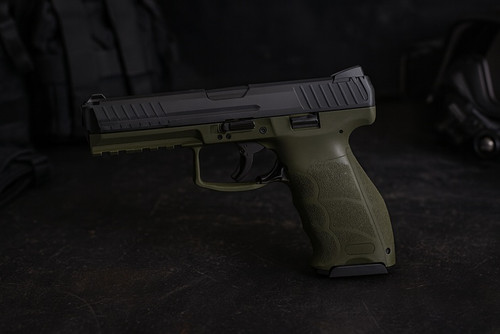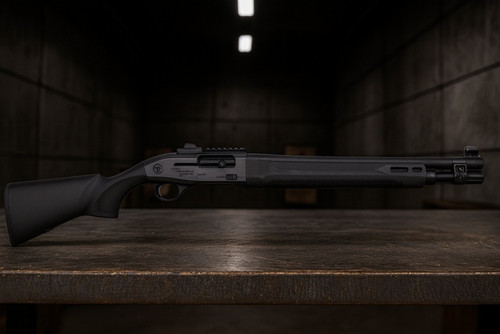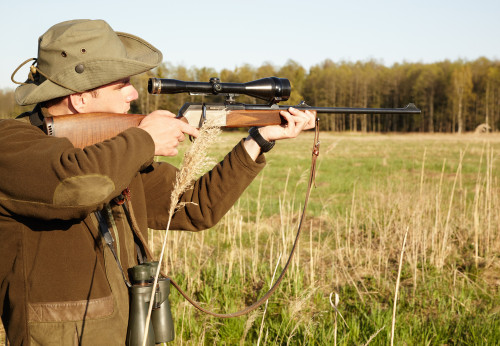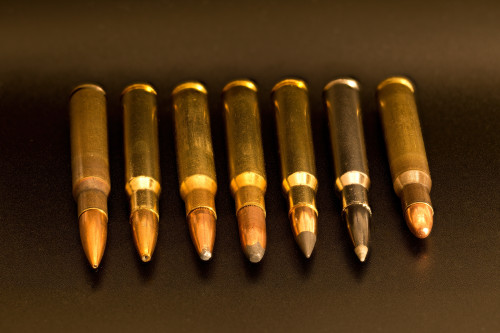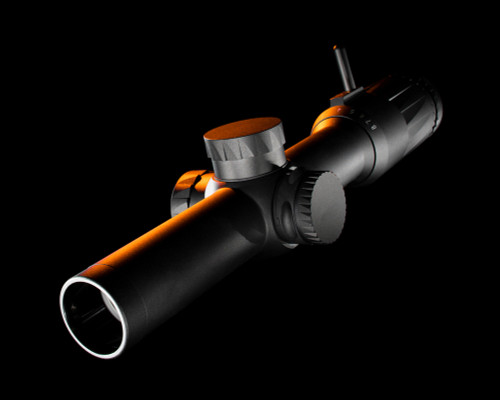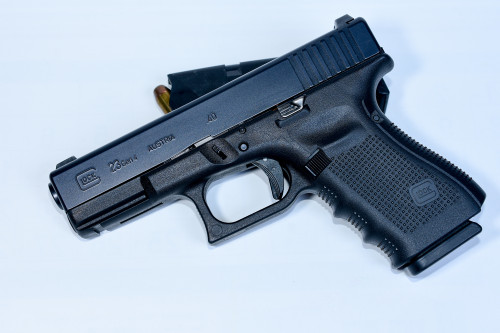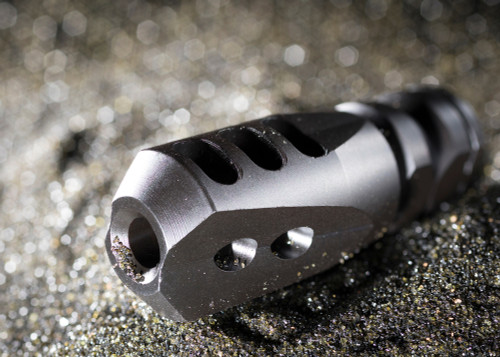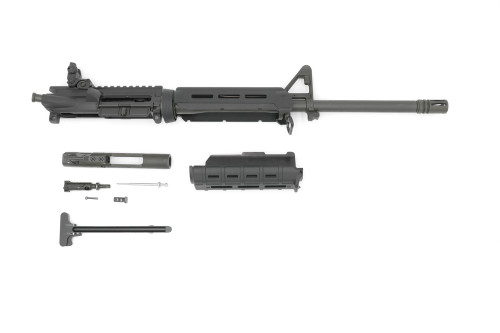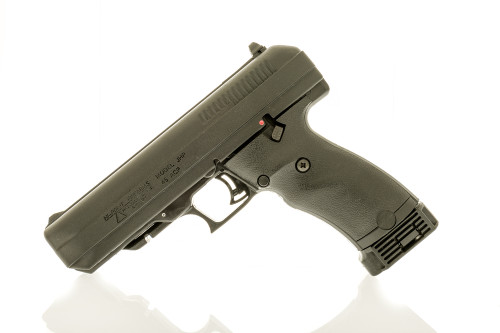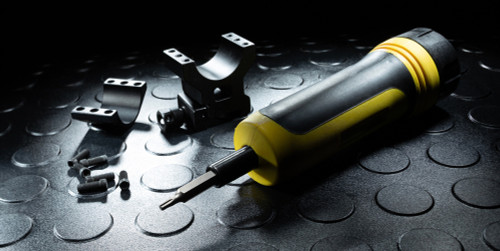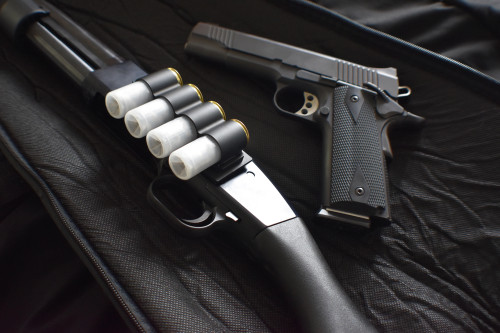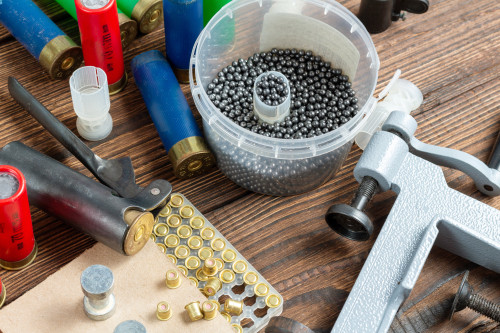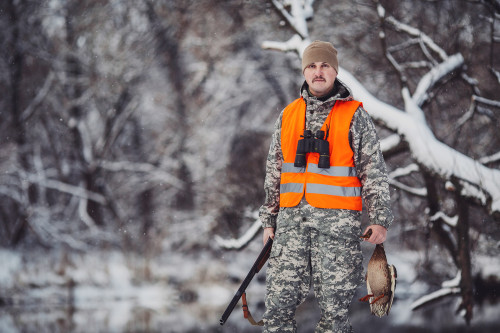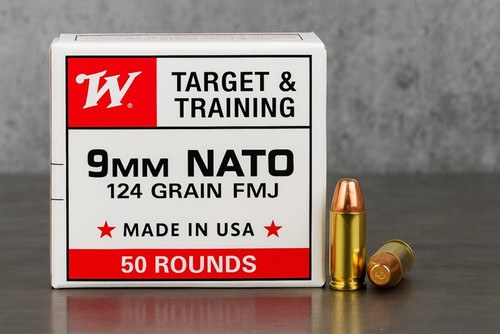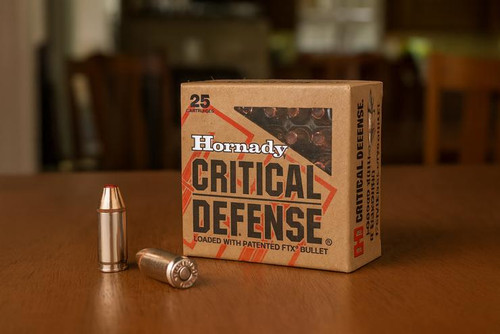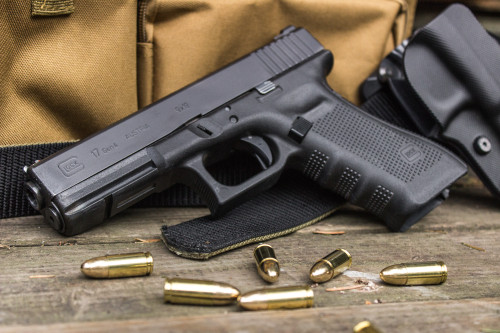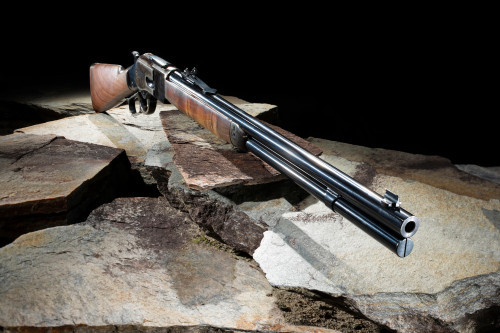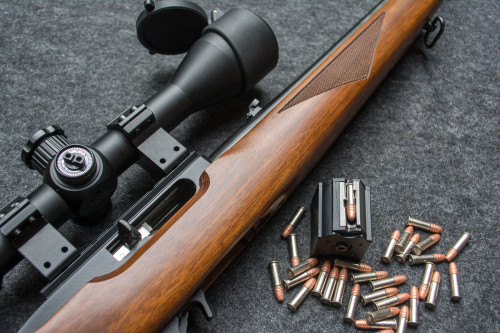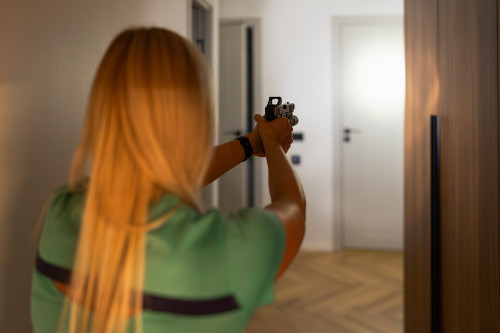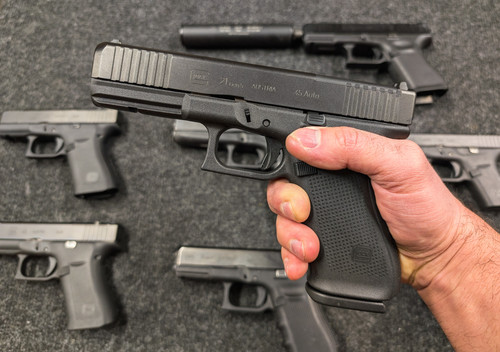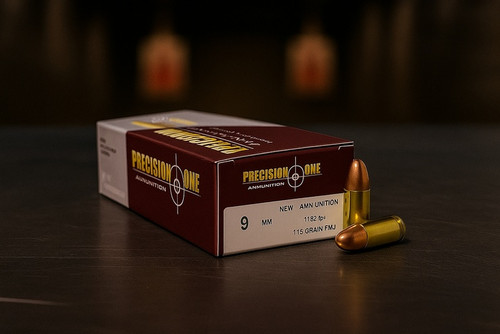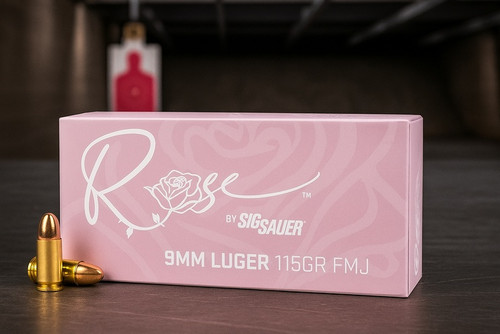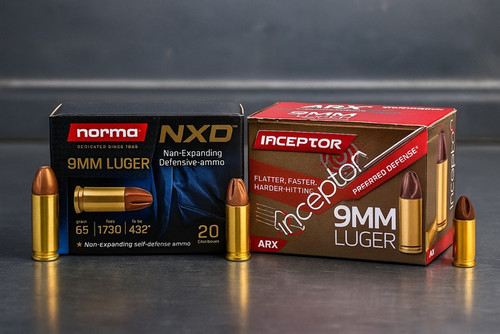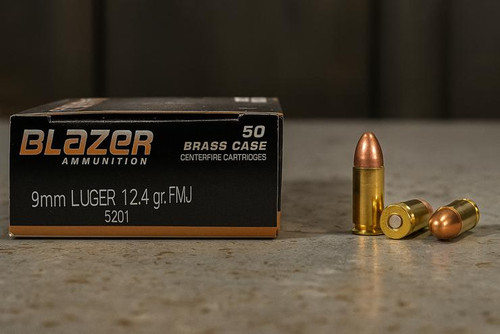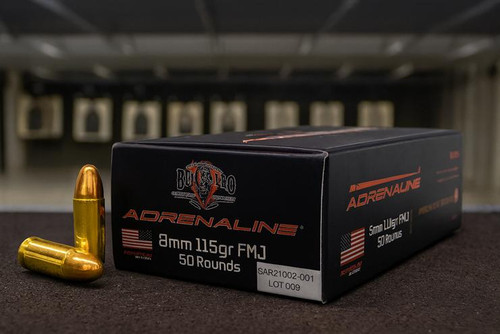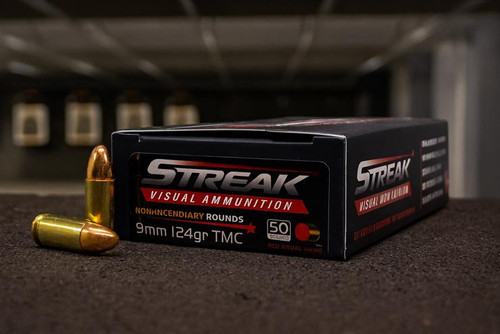If you’ve ever seen those truly excellent marksmen — the ones who could hit a bullseye on a fly’s ass — then you know how awesome it is to watch them at work. From Annie Oakley to Jerry Miculek, there’s a reason that great competitive shooters have been idolized in American culture: they’re awesome.
As humans, we like to watch people who are good at what they do, and we like to keep score to decide who is best. Though few of us can make it to the big leagues of any sport, most of us can be competitive within our local shooting circuit.
Shooting is as much a practical skill as it is a talent. Whether it’s run-and-gun IDPA shooting, casual trap or skeet shooting, or bullseye competitions, you don’t need to have God-gifted dead-eye abilities to be a competitive shooter. You just need to enjoy shooting enough to participate in these events.
Let’s look at how competitive shooting can improve your skills, and what you can expect from different kinds of shooting competitions.
Why Compete?
Even if you don’t aim to be the best shooter on Earth, shooting competitions offer you several worthwhile benefits.
- Motivation - Competing against others is simply the best way to improve your skills. Plinking in the backyard or at the range is great, but you’re not really pushing yourself unless you’re up against the clock or another shooter. Competitions push you to perform better than the other guy, and improve with each shot. The “prize” can serve as a strong motivator.
- Mentorship - When you join a competition, don’t expect to win on your first try (or even your 20th). Think of it as a learning experience. In this environment, you can learn firsthand from better, more experienced shooters. As you form relationships with advanced competitors, you’ll learn things about yourself, your technique, and your gear that you won’t learn in casual target shooting. You may even find a great shooter willing to teach you what they know.
- Community - Camaraderie is baked into any competition. You’re surrounded by folks with a similar interest upon which you’ll forge lasting friendships, in an environment that keeps you accountable to your personal growth. This is one of the best parts of shooting competitions.
- Training - In addition to improving your basic shooting skills, many competitions help you train unique movements and skills that can help in real-life scenarios. If range time simply isn’t exciting or dynamic enough, competitions can help you work on a wide range of firearm-related skills.
If you’re feeling bored at the range or want to be more effective with a gun, try a shooting competition. You won’t regret it.
Training for Competitions
Competitions aren’t your average range session. Your competitors are serious about their shooting skills, with ambitions above general self-defense training. Before joining their ranks, we suggest focusing on a few key areas of shooting discipline:
- The Basics of Your Gun - Before you set foot in a competition, you’ll need to be intimately familiar with your gun and its operation. Know how the action works, how to clear a jam, and how to reload it. Practice drawing and shooting from a holster. Don’t worry about speed yet. That will come with time.
- Firearm Safety - Most important of all is SAFELY handling and moving with a loaded gun. Being reckless can get you thrown out of a competition (or any gun range, for that matter). Holster your gun until it’s time to shoot, and keep the muzzle pointed downrange at all times.
- Competition-Specific Training - Train in the specific skills needed for your chosen competition before you show up to compete. Not everything is just “hit the bullseye.” Some competitions focus on speed. Some focus on accuracy at distance. Some require you to fire a mag, reload, and fire the whole thing again — so practice reloading specifically. Of course, doing so with live ammo can get expensive. That’s why dry fire training is an essential method for drilling specific aspects of firearm handling. You can practice acquiring targets, reloading, drawing, trigger press, and more without firing a single live round.
When you can go to the range and shoot competently, accurately, and SAFELY, you’re ready for competition.
There’s no shortage of types of competitive shooting and no matter which type you pursue, you’ll be met by a host of folks who are glad to meet you and help you improve.
Handgun Shooting Competitions
Handgun shooting competitions are very popular. Here are some of the most notable handgun competitions along with their required gear.
IDPA
International Defensive Pistol Association matches are “practical competitive shooting focused on defensive tactics with carry gear.” These run-n-gun matches feature realistic scenarios and courses of fire that replicate situations you may encounter as an armed citizen. Shooting outside of a “square range” gives you an advantage over so many gun owners who never venture off the slow-fire target line. After participating in a few of these competitions, you’ll be faster, more confident, and more capable with your carry gun.
Gear Necessities
Eye and ear protection are required for all competitors at IDPA.
- Pistol - Anything from an out-of-the-box stock pistol to a tricked-out “race gun.”
- Spare Mags - Always carry extra magazines and magazine holders.
- Holster - Preferably a Kydex OWB.
- Ammo - 9mm is the most popular, but you’ll also see .40 S&W and .38 Super.
IPSC
The International Practical Shooting Confederation also features courses of fire with everyday objects and realistic scenarios. IPSC ranks shooters on ability, so you’ll shoot with peers of comparable skill levels, which is great for newbies and those looking to advance.
Gear Necessities
- Pistol - Anything from an out-of-the-box stock pistol to a tricked-out “race gun.”
- Spare Mags - Always carry extra magazines and magazine holders.
- Holster - Preferably a Kydex OWB.
- Ammo - 9mm is the most popular and common, but you’ll also see .40 S&W and .38 Super.
Metallic Silhouette
If moving and shooting isn’t your cup of tea, silhouette is a fantastic option for beginners, crack shots, seniors, and anyone else who can pull a trigger. It’s a controlled course of fire with metallic silhouette targets in the shape of animals. These silhouettes look like chickens at 25 yards, pigs at 50 yards, turkeys at 75 yards, and rams at 100 yards. These are the yardages for handguns, but the same targets can be shot at greater distances using rifles.
Gear Necessities
- Pistol - Either rimfire or centerfire. .22 LR is the most popular rimfire while .357 Magnum is a great choice for centerfire.
- Ammo - .22 (you want the GOOD stuff, not big box store junk). You can also use .357, or whatever floats your boat. An accurate revolver is best for centerfire, while a pistol or revolver will work just fine for rimfire.
Bullseye
Some consider this the purest form of marksmanship. Your objective is to make the most precise hits on target by clustering your shots as close to or on top of the bullseye as possible. Because of the degree of accuracy and precision needed, high quality guns and gear are imperative, along with a steady hand and a sharp eye.
Gear Necessities
- Pistol - High quality semi-auto centerfire or rimfire, depending on which class you’re shooting. But really, any old gun will do for beginners. You won’t be laughed off the range.
- Ammo - Spend as much as you’re able to on quality rounds, whether it’s 9mm, .45 ACP, .38 Special, or .22 LR.
Shotgun Competitions
Shotgun shooting competitions are great for hunters, old-school shooters, and anyone looking for a unique challenge. But don’t be fooled — these are harder than they may appear at first.
Trap Shooting
Trap shooting involves blasting flying targets out of the sky. These traditionally clay targets (called “pigeons”) are launched from a machine at varying speeds and degrees, simulating flushed game birds. Rounds are 25 clays per shooter, the same number of shells in a box. A perfect score is 25/25.
Trap is the most instinctive shotgun discipline. Most shooters don’t line up the beads along the rib for every shot before pulling the trigger. Rather, they usually “point shoot” to some degree, meaning they’re so in tune with their gun that hitting a target is as easy as pointing a finger. It takes practice to go from busting 10 or so birds per round to the low 20s.
Trap is quite accessible for new shooters and youngsters, largely because it’s slower paced and more easily grasped than other shotgun sports.
Gear Necessities
- Shotgun - Ideally 12 gauge over/under or an autoloader with an improved or modified choke.
- Shells - Trap loads and clay-specific shells are the best here.
- A Pouch - Put a pouch on your belt that holds a box of shells so your pockets remain free.
Skeet Shooting
Skeet is similar to trap, but instead of launching in front of you, the clays fly across you in both directions. Skeet is a great discipline to take on once you’ve gotten good at shooting trap.
A good autoloader or over/under shotgun is the gun of choice here. To give yourself a margin for error, consider an improved choke, which will put more pellets on target and deliver more dramatic clay kills.
Gear necessities
- Shotgun - Ideally 12 gauge over/under or an autoloader with an improved or modified choke.
- Shells - Trap loads and clay-specific shells are the best here.
- A Pouch - Put a pouch on your belt that holds a box of shells so your pockets remain free.
Action Shotgun
This is similar to IDPA and IPSC shooting, but with a shotgun. Targets are often metallic because pellets shred paper pretty quick. It’s not incredibly hard to hit the targets in action shotgun, but the focus here is on speed. Most shooters use a short, handy shotgun with a cylinder choke that gives the widest spread of pellets.
You’ll be doing a handful of reloads, which can be tricky, so get to know every aspect of your gun’s operation by feel before stepping up to the firing line. The targets are “pepper popper” steel numbers, and most everyone uses a run-of-the-mill birdshot load to knock ‘em over. Slugs are generally not permitted in these competitions.
Gear necessities
- Shotgun - Ideally a pump action or reliable autoloader with a cylinder choke.
- Shells - Regular game shells are fine in this case.
- Shell holder - Either on the side of your gun or on your belt, just like wild West outlaws.
Rifle Competitions
Easily some of the most popular events in the firearms world, rifle shooting competitions are for everyone — young, old, newbie, or experienced marksman.
Precision Rifle Series (PRS)
This is a fast-paced competition where shooters hit targets at both known and unknown distances. The best shooters have oodles of nice gear, but as with most competitions, there are beginner categories as well.
Most serious shooters in PRS opt for a bolt-action rifle, since they offer a higher degree of accuracy than gas-operated semi-autos like the AR-15. Bolt actions are inherently more accurate because the chamber is locked shut, giving the shooter a more solid platform upon which to shoot and watch their impacts. The bolt of a semi-auto jumps backward and slams home after a shot is fired; a bolt gun does neither.The shooter adjusts the bolt after seeing the shot’s impact.
Some classes within PRS permit only gas-operated/semi-auto guns. But when most people think PRS, they think hyper-accurate long-distance shooting.
Gear Necessities
- Rifle - Most often a highly accurate bolt-action rifle chambered in .308, 6.5 Creedmoor, or .223.
- Ammo - You want quality, consistent ammo for the best results, especially shooting at longer distances.
- Scope - With turrets that let you “dial in” distances in MILs or MOA.
Rimfire Challenge
Rimfire Challenge is a bullseye competition using only rimfire rifles. In this, there are many classes accessible to various kinds of shooters and budgets.
Gear Necessities
- Rifle - Most shooters opt for an autoloading (like a Ruger 10/22) or bolt-action .22 LR rimfire.
- Ammo - With rimfire it’s even more imperative to use quality ammo, as cheap, bulk rimfire is notoriously fickle.
High Power
High Power shooting is like long-distance bullseye shooting with typical military service rifles, such as the M1 Garand or the M1A. Competitors also use more modern rifles like the AR-15 (the semiautomatic version of the M16).
Gear Necessities
- Rifle - The type is highly dependent on the class.
- Ammo - Depending on your gun, you’ll use either .308, .223, or .30-06.
Combo Shooting: 3-gun/ 2-gun Competition
These competitions have gained a lot of popularity. The 3-gun competitions use a run-and-gun format with a rifle, pistol, and shogun. The 2-gun competitions often use a rifle and pistol. While 3-gun competitions appeared first, lots of folks are ditching the shotgun and going with the 2-gun variant, since the skill in the shotgun portion is more about reloading speed than accuracy.
Gear Necessities
- Rifle - Most use semi-auto everything here. The key is reliability. Most competitors use an AR-15 variant for the rifle.
- Pistol - You can use any number of semi-auto handguns for the pistol portion.
- Shotgun - You’ll want a quality autoloader here.
- Ammo - Supreme accuracy is less important here than reliability. It should go bang when you need it to.
How To Save Money by Reloading Your Own Ammo
So you want to get into competitive shooting? Great! Just know that you’ll need to furnish all the necessary equipment on your own: Gun, ammo, eye and ear protection, and any other accessories. But after your initial investment, your biggest gear expense will be ammunition.
That’s why many competitive shooters roll their own ammo. In other words, they reload their own custom rounds. By taking all the elements of a cartridge (the brass case, bullet, powder, and primer) and making your own ammo, you can save money and achieve a greater degree of precision. It’s perfectly legal, and once mastered, the benefits are immense for competitive shooting.
Rolling your own ammo also lets you tailor loads to your gun. For example, if you know your gun should be able to put 5 shots inside a 1” circle at 100 yards, but it’s not doing so with off-the-shelf ammo, a custom cartridge might work better. You could use different bullets with different kinds and charges of powder to find a velocity that’s more effective. Because every gun is different, there’s a lot of experimentation involved in reloading — but that’s part of the fun.
Besides the components mentioned above, you’ll need a press and a set of dies for each caliber you plan to reload. These can be either slow and economical single-stage presses, which might yield 50-60 rounds per hour, or progressive presses that crank out a few hundred rounds per hour. Your level of investment should match your needs, otherwise you’ll either waste money on too much equipment, or too much time making ammo way slower than necessary.
Final Thoughts
Competitive shooting is fun, great for training, and a perfect way to build friendships within a community.
Don’t worry — most shooting competitions aren’t pretentious. Almost no one will judge you or tell you that you suck. Most competitors want to help each other get better by offering constructive criticism, and find fellow shooting enthusiasts.
But you can’t just show up to a competition and expect to reap the benefits. You need the right ammo, gear, and skills to make the most of any competition — and you need them from a reputable dealer with trustworthy shooting and firearms experience.
At Pro Armory, our team of veterans is dedicated to providing you with a great online shopping experience. We offer solid ammo and tactical gear for your shooting goals, all at an affordable price. You can save even more by buying in bulk.
Want to increase your skills for an upcoming shooting competition? Pro Armory offers online training to help you become more proficient and safe with your firearm. Sign up for our newsletter to be notified when training officially launches.




